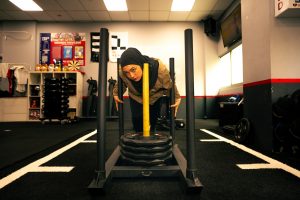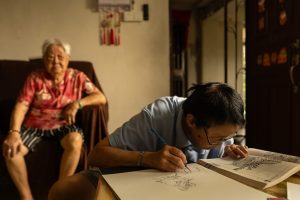All photos by Stephanie Lee for RICE Media
Warm, sweaty, and freshly de-socked. On a seemingly regular Wednesday afternoon, I’m feeling up my photographer’s foot.
Several of my colleagues are watching me fiddling with her toes. It’s awkward as much as it is uncomfortable. Both of us look and feel like we’d rather be somewhere else.
One person in the room is excited, though. She’s Kimberley Leow, a senior podiatrist by trade and a certified feet enthusiast. She’s guiding me through a way to find the source of my photographer’s prolonged discomfort, bending her feet this way and that.
Finally, I feel a tiny ball of tension in the sole of her foot. Kimberley enthusiastically confirms it, and the room fills with “oohs”.
“There are many causes of leg pain! But the good thing is that you can always find out what’s wrong just from observing feet,” Kimberley gushes.
“Your feet will never lie!”
The Wonderful World of Fascinating Feet
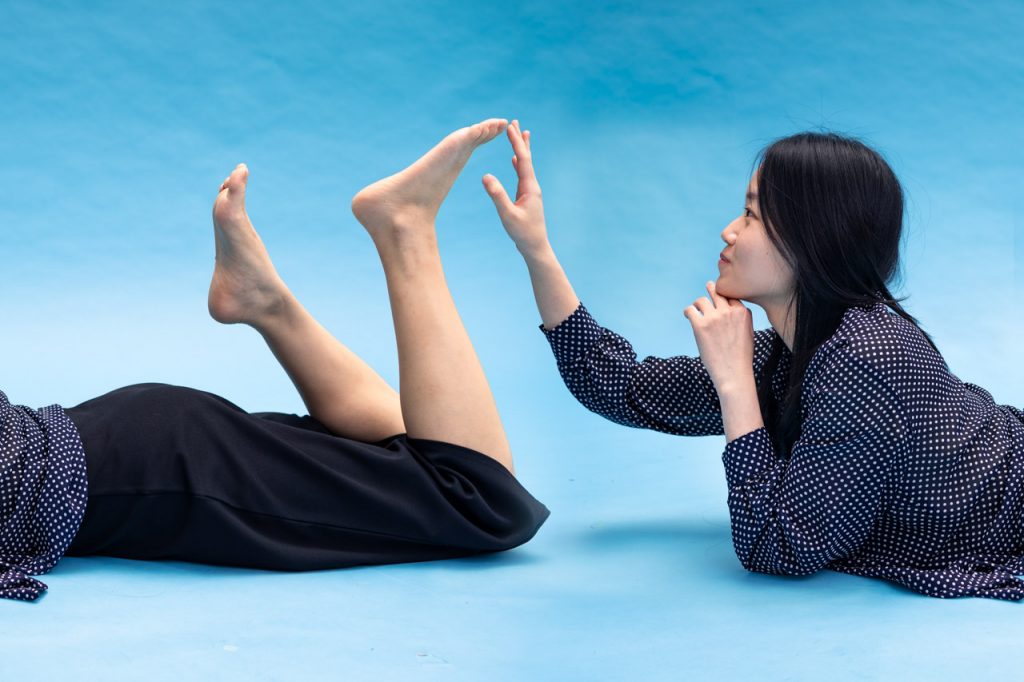
Kimberley has a strong stomach—she deals with feet, after all.
The 31-year-old vice-president of the Podiatry Association (Singapore) is completely unfazed by all sorts of visual horrors, despite what her sweet, Taylor Swift-loving demeanour might suggest. She loves them—the gnarlier-looking the feet, the better.
The moment she enters the photo studio, she’s immediately drawn to the giant photos of various feet-related ailments we have hung up. Some are mild-looking. Others are, well, gag-inducing if stared at for too long. While I’ve been doing my best to ignore them, she flits between the photos, eagerly checking each one out.
“This one has a smell,” She points to a blown-up photo of an onychauxis nail, her eyes sparkling.
“Sometimes we can identify what’s wrong with a patient’s foot just by the smell.” Certain bacteria have a unique smell, she adds, assuring me that podiatrists don’t actively sniff their patients’ feet.
They do, normally, have an appetite for the unusual. Kimberley recounts when she knew the job was for her. Over lunch, senior podiatrists were discussing a rather gruesome case—visuals included—with the same casual candour as you would with the latest Netflix show.
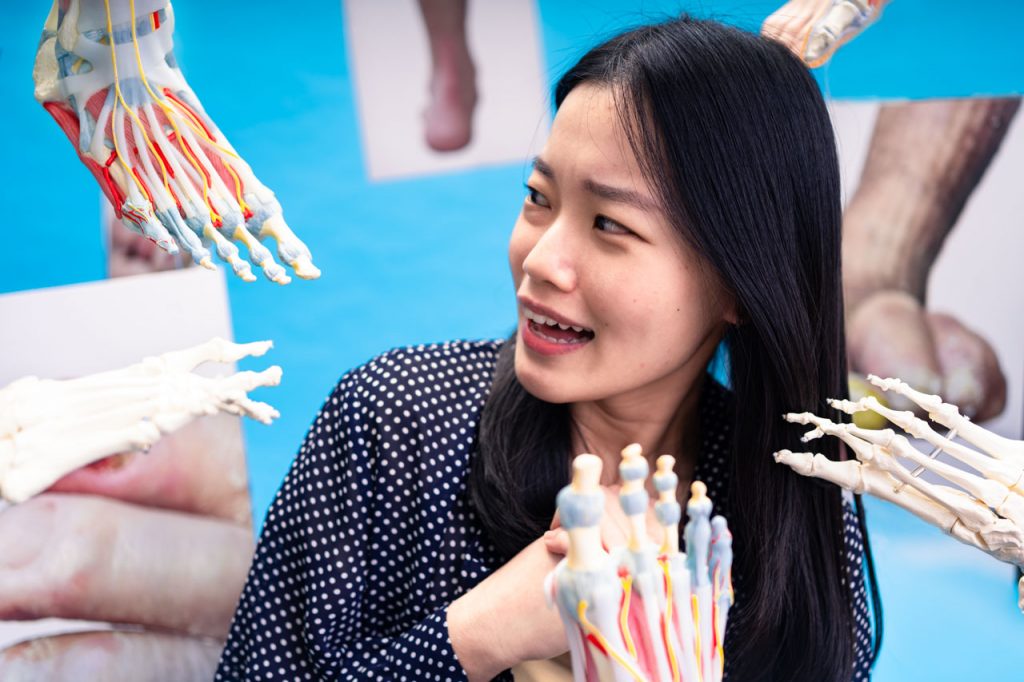
Kimberley found herself in a comfortable space. “I found myself eating, enjoying both my food and the topic. That was when I realised I could see myself doing this for the long run.”
I can’t help but wonder if all podiatrists are similarly fascinated by such… vivid things. The simple answer is yes.
The longer, more elaborate answer lies in the nature of their profession.
Like any health professional, podiatrists need a stomach of steel and an intense drive to learn and understand their patients’ conditions. The foot, like any other part of the body, can be susceptible to unique afflictions that will bewilder most people. It may also cause shame and insecurity to the patient carrying it.
So it’s pertinent to the podiatrist’s job that curiosity takes over any other human instinct. There’s simply no room for squeamishness here.
She admits that dealing with feet ravaged by fungal infections and impenetrable odour for days on end can be weird to process after. She even had nightmares about them once. Since then, however, stinky feet are just par for the course now.
The Podiatry Pursuit

Despite her youthful appearance, Kimberley is already one of the older few on her team at Sengkang General Hospital. This is surprising, considering the general public wouldn’t expect young people to tackle—or even enjoy—solving feet issues all day long.
Podiatry isn’t offered as a degree in local universities—Kimberley got her Bachelor of Podiatry from Queensland University of Technology—so most wouldn’t even think there would be a job opening like this. If they did, they might probably mistake it as a foot and ankle orthopaedic surgeon.
Both deal with lower limb health. As the name suggests, foot and ankle orthopaedic surgeons handle surgeries that fix internal problems like torn ligaments and broken bones.
Podiatry handles external issues. Podiatry serves as orthopaedics’ allied health partner, supporting and assisting treatment plans offered by doctors. From wound care to sports injuries, post-surgery rehabilitation to nail health—podiatrists handle them all.
For Kimberley, her desire to be a podiatrist stems from wanting to improve the lives of people. It was a moment she witnessed as a student that refined that focus: a patient’s gait had been remarkably transformed after trying out a modified, but otherwise simple, pair of insoles.
It seemed like a small, insignificant action on the podiatrist’s part. Yet, for the patient, it changed everything. Walking is a basic function; nothing is better than seeing a patient get it back.

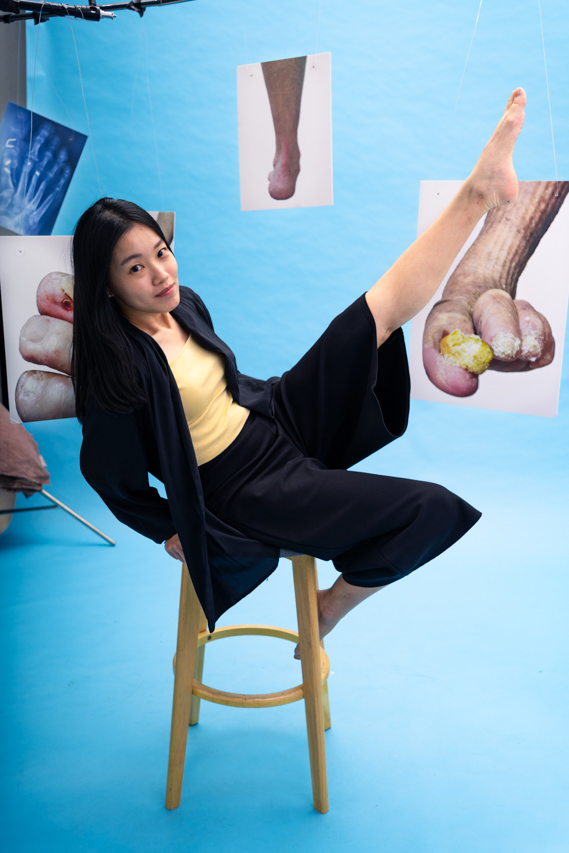
Just like shoes, there’s no true one-size-fits-all solution.
Treatment often depends on evaluation: the patient’s lifestyle, background, daily habits, and occupation. A simple foot ache could simply be caused by an ill-supporting shoe—or it could indicate something much more severe.
“Feet health tends to get taken for granted,” she says. “They’re just as important as every other body part, maybe even more. The things you do—running, walking, standing—require your feet. If they hurt, your functions become severely limited.”
She cites the increase in sports-related injuries during the pandemic. Back then, with people deciding to jog and exercise to relieve boredom or escape the house, the decision proved to not be as clear-cut as a regular time-killing activity like, say, playing Among Us.
Going back into exercise, especially after living a sedentary lifestyle for years, requires proper preparation to avoid injuries—it includes simple, but necessary, steps like picking the right pair of shoes or taking on warm-up exercises to acclimatise your muscles.
Only some of us exercise regularly, but many of us wanted out of the house. Simply put, not everyone prepared themselves adequately for that. It’s why Kimberley considers education as crucial as treatment.
To her, most cases are not resolved in one session, and it’s up to the patients to manage their condition outside the clinic. Sometimes, it means cutting nails correctly or dressing wounds properly. Sometimes, it means knowing what kind of shoe works best for their feet type and lifestyle instead of only choosing based on looks.
Health starts from the ground up. For Kimberley, it’s pretty literal.
Best Feet Forward
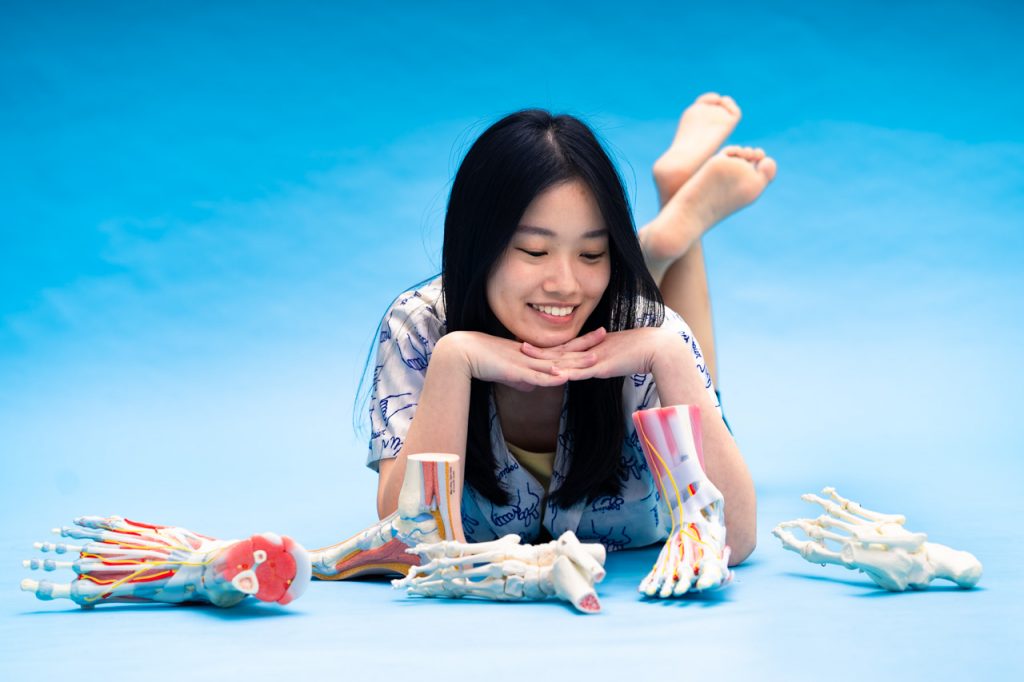
Even with her busy schedule, Kimberley finds time to learn from others in the industry.
As the vice president of the Podiatrist Association (Singapore), she runs networking events where local and international podiatrists mingle and exchange knowledge. Podiatry in Singapore is still in its early stages—with so few podiatrists here, the expertise and advice from podiatrists abroad are extremely valuable to improving the local field.
If it weren’t for the overseas healthcare scholarship offered by MOH Holdings (MOHH), Kimberley might not have had the opportunity to become a podiatrist herself.
As it is, the Podiatrist Association is doing its best to make podiatry work known not just to patients but to future healthcare students so they know that podiatry is actually a viable vocation in Singapore.
The association’s ultimate dream, Kimberley shares, is that foot care will one day become as widespread as dental care—with regular check-ups and even health screenings in school.
As with any other condition, prevention is always better than cure. Kimberley hopes that starting preventive foot health from a young age would minimise the pain people go through but currently endure.
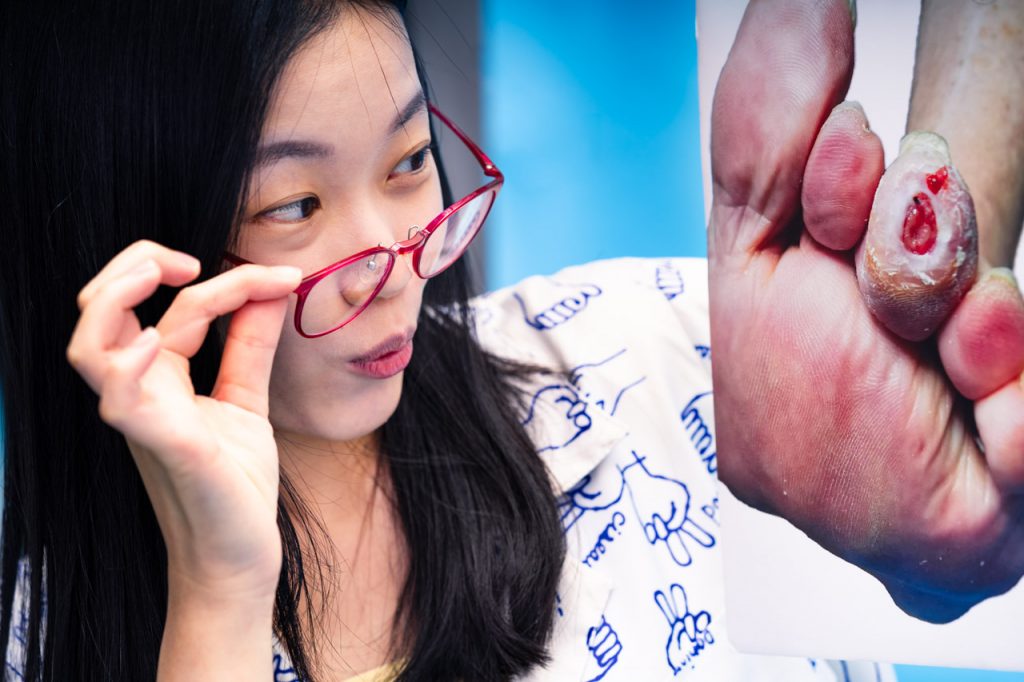
She finds it heartening that more and more students visiting the hospital on job-shadowing trips are aware of what podiatry is.
“Unlike the past, the younger generation is exposed to a lot more things on the internet, so they know more about feet,” she muses.
“The internet does love its feet,” I offer. She laughs.
“I guess it starts somewhere,” she adds. “If this interest in feet can help them realise that there’s actually a profession dedicated to its health, that’s good too. As long as they’re aware we don’t normally work with the pretty perfect feet you see online.”
Laced Up

As our photoshoot session ended, an impromptu feet consultation session began. My colleagues came forward to seek advice for themselves and their family members.
None of them had seen a podiatrist before. But in that short two-hour session, Kimberley’s insights on foot health changed their minds immediately.
Even as we left the studio together, she continued to share whatever insights and advice she could until we parted ways. Maybe it’s an occupational habit, but it hardly counts as an occupational hazard when a professional is this dedicated to their cause.
“I love treatment, and I love pathophysiology. The recovery journey is so fulfilling, and I think all healthcare professionals can agree there’s nothing more satisfying than knowing your patient feels better.”



